And Dutton is in WA at a West Australian newspaper event:
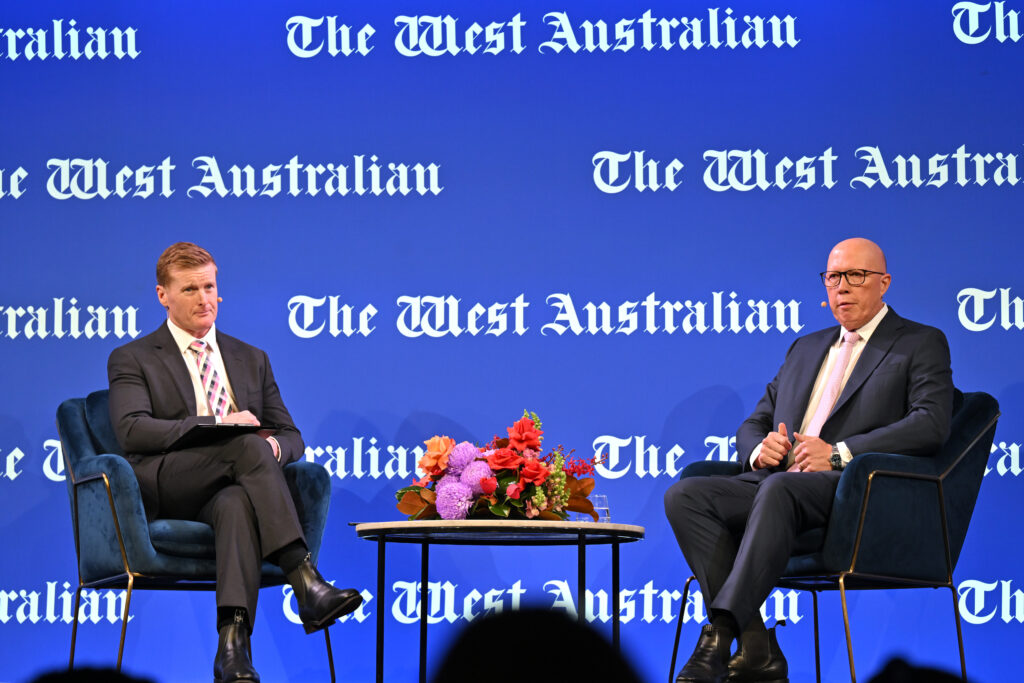
And of course – gotta keep that billionaire quota up:
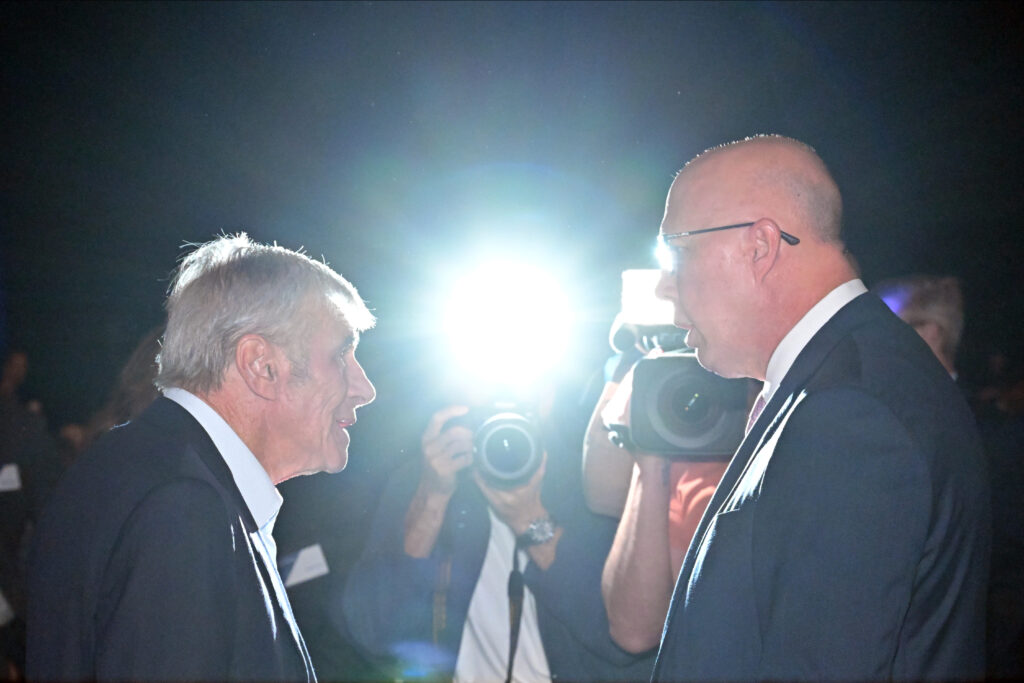
Fri 11 Apr
This blog is now closed.
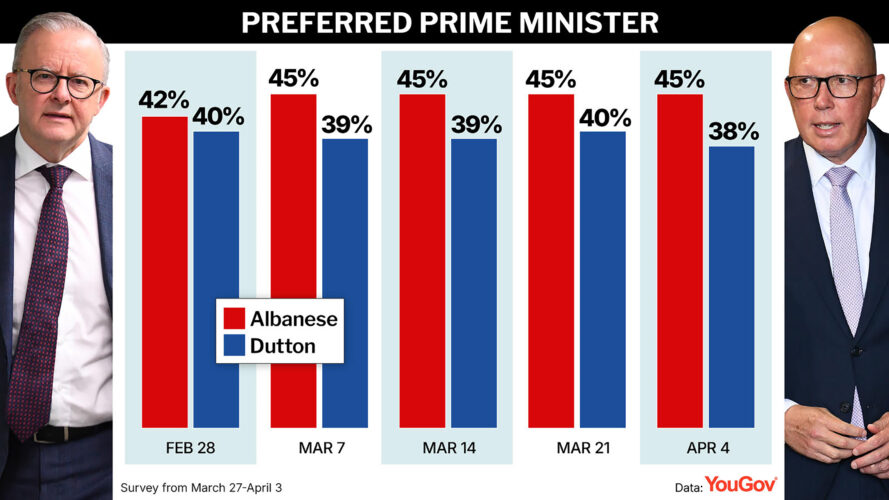
And Dutton is in WA at a West Australian newspaper event:

And of course – gotta keep that billionaire quota up:

Here is how the campaigns have played out this morning – Albanese in Darwin:
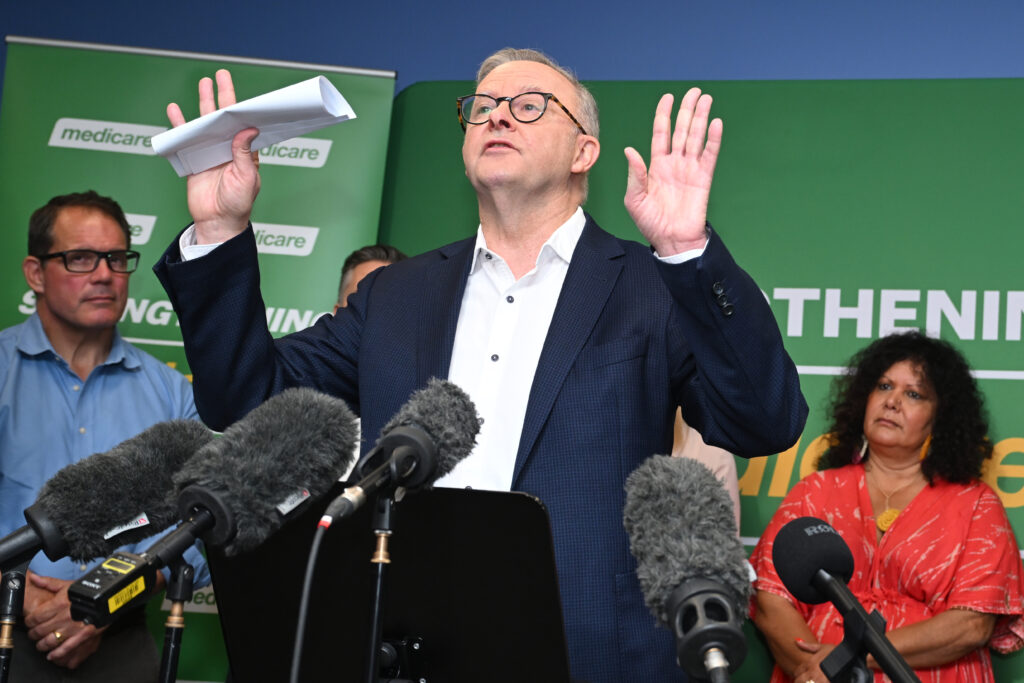
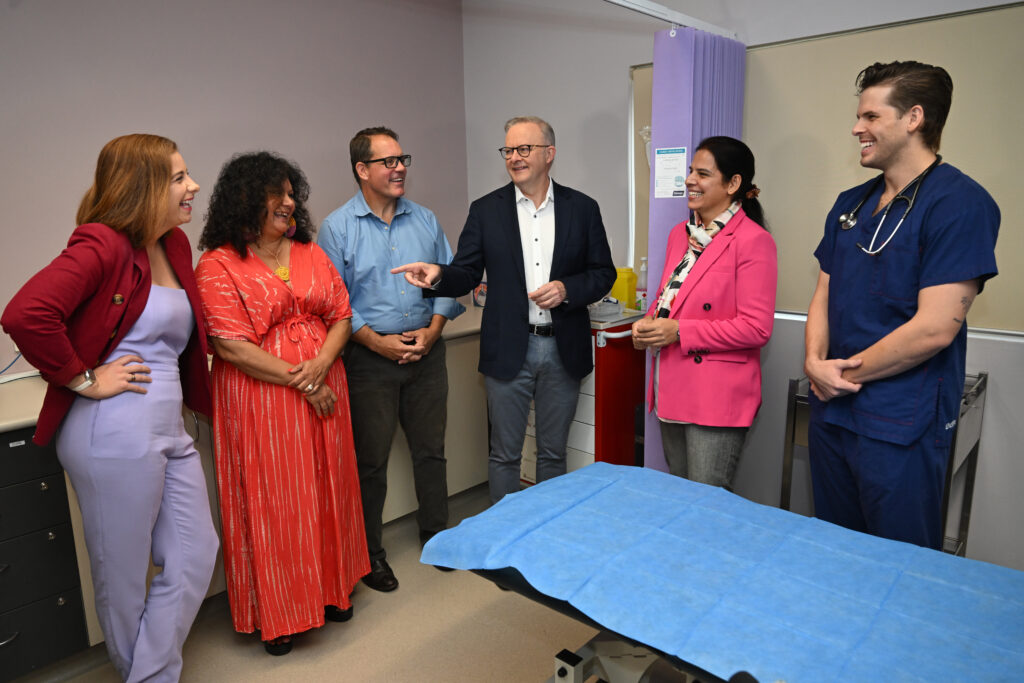
It’s chaos out there, friends.
On this episode of Dollars & Sense, Greg and Elinor discuss Trump’s tariff turmoil, the dodgy numbers doing the rounds in the election campaign, and the Coalition’s big fund boondoggle.
Peter has asked us: My question relates to mental health – both parties throwing wads of cash at the issue but neither seemingly addressing the underlying problem – an escalation in demand for services but no increase in the number of trained psychologists- what is the point of announcing $00s of millions extra cash if people needing help cannot get an appointment? Why not make the degree free for the next 5 years to encourage people to study and train?
It’s a really good question. Part of Labor’s response is that they are not increasing the number of subsidised mental health appointments from 10 to 20 is there is not enough speciality doctors for the demand and there would be more people missing out.
So Mark Butler would tell you they are investing in all the things you have asked about to try and address this issue into the future. The problem is the now – and the states (just look at NSW) and federal Labor are still not putting in the necessary funds to get doctors now, to pay the ones they have better (and attract more into the public system) and address the backlog. As for making the degree free (like some TAFE courses are to address skill shortages) is a great idea – but so far, we are not seeing anyone take it up.
Australia is one of the world’s largest gas exporters. We send around 80% of our gas overseas. More than half of the gas we export doesn’t even earn royalties or resources rent tax. We are literally giving away our gas resources.
None of that has stopped the gas industry from trying to convince us for the past few years that a gas shortage is imminent. Instead of taking responsibility for the problem they are causing for they’ve relentlessly attacked the Victorian Labor Government, characterizing the banning of gas connections to new homes they see as “the demonisation of gas”, when in fact the government’s attempt to reduce the state’s dependence on gas is exactly the right response to gas industry engineered scarcity and price gouging.
All of the major political candidates at this election have acknowledged that there’s “no gas supply shortage in Australia”.
Labor’s energy minister Chris Bowen, who admitted at the National Press Club today that “a lot gets exported”, was the last to arrive at the party.
Gas producers and their industry associations try to get their voices heard in multiple ways. One approach is to contribute to major parties’ finances. In 2023-24, Australian Energy Producers disclosed almost $95,000 in contributions to the Labor Party, and a further $77,000 to the Coalition.
Hedging is a good investment approach but hasn’t worked as a political strategy, which is why they’ve resorted to outright criticism of the Coalition over its proposed gas reservation plan. AEP boss Samantha McCulloch says it would be “another heavy-handed intervention” that leaves gas companies “no incentive” for boosting domestic supply.
Asked about the gas industry’s criticism of his new gas reservation policy yesterday, Peter Dutton bluntly retorted: “Are we here to line the pockets of the gas companies? No.”
AEP has also been conducting polling in support of gas to apply pressure on independent MPs in Kooyong and Goldstein. To be fair, neither Monique Ryan nor Zoe Daniel are likely to lose sleep over this.
It’s not just the political parties who are hardening up in the face of the gas industry propaganda.
Every year, the Australian Energy Market Operator comes out with a Gas Statement of Opportunities. That document forecasts gas usage in the coming years, and although it consistently shows declining demand for gas, it also warns of potential peak-day shortfalls in the southeast. It is usually followed by plenty of scaremongering about a “looming gas crisis”.
This year, the report itself was subdued and the media coverage less gullible. The Sydney Morning Herald said that gas substitution policies were making a difference, and even the AFR conceded that the prospect of a “gas crisis” had “slightly eased” in the short term.
Many Australians seem to be turning on gas (figuratively speaking). It’s one of the only interesting things about this election so far.
Jane Hume yesterday said the quiet part out loud. She was defending putting money into the LNP’s new investment funds – saying that it was being used to pay down debt.
The ABC host fairly reasonably asked why wouldn’t the government just use the money to directly pay down debt? She responded by saying “if you put money into a Future Fund, it actually earns more money than it cost to repay the debt”.
I mean… wow!
Following this logic, you could ask why don’t we borrow a lot more – Why not $100bn?? Why not $200bn!!!?? – we could earn more interest on investments and pay down even more debt?! Woohoo! Debt solved!
If the Coalition were serious about running a surplus, then they could always raise more tax revenue to fund it. If we look at all the budgets over the past 25 years, every deficit has occurred when the tax to GDP ratio was below 23.6%, and every surplus, except one, has been when the tax to GDP ratio was above 23.6%.

Australia is a low tax nation. If we collected just the average amount of tax collected by other developed (OECD) nations, we would collect an extra $135 billion each year.
We put together a list of simple tax ideas that could raise up to $62.7 billion each year while cracking down on inequality and other social harms. For instance, we currently exempt many huge, expensive, dangerous, and emitting vehicles from luxury car tax (think about those giant RAM utes you’re seeing more and more). This cost $250 million in 2023 and encourages people to buy these vehicles.
And that $65.7bn? What could we spend that on? Try this for starters:

This post from the AEC appeared to get deleted almost as soon as it was out up, which is a shame. We love some nerd humour.

When Peter Dutton’s gas plan was announced two weeks ago, the gas industry claimed the policy would create a “glut” of gas on the east coast.
Now, in a complete reversal, the gas lobby is trying to argue that the coalition policy “risks reducing domestic gas production and supply.”

Both claims are untrue.
It is a simple matter for a government to ensure additional gas is supplied to Australians by imposing a tax on exports, as Peter Dutton has proposed.
“Labor, Liberal, the Nationals, Greens, One Nation and Independents all rightfully agree that there is no gas shortage in Australia,” said Dr Richard Denniss, Executive Director at The Australia Institute.
“The gas industry has been deliberately diverting Australian gas away from Australian industry and households towards the export market to boost their profits.
“This is a simple problem to solve, and Peter Dutton has already proposed a simple solution that would work.
“Now that everyone agrees that there is no gas shortage, the gas industry is trying to muddy the waters by making policy solutions sound complicated while simultaneously making contradictory and absurd claims to mislead Australians during an election campaign.
“While it is good news that virtually all political parties agree that there is no gas shortage in Australia, the Labor government is yet to announce any new plans to ensure that Australian households and businesses are prioritised over export customers.”
Glenn Connley
Just to dig a little deeper into that YouGov polling, which Amy mentioned in her opening post this morning.
Apart from the obvious, which is Labor’s growing two-party preferred lead, the most interesting figure is the extraordinary closing of the gap in primary vote between the ALP and the coalition.
As recently as February 14, 37.4% of those polled were preparing to put a 1 beside the Liberal or National candidate on their ballot paper.
Just 29.1% were planning to give their first preference to the Australian Labor Party.
Here’s the headline from the YouGov website on February 14:

Fast forward 56 days, and this is the new headline on the YouGov website.

That 2PP figure is based on a primary voting intention which has Labor closing the gap the coalition in a big way.
32% of voters now say they’ll put a 1 beside their Labor candidate on May 3.
33.5% of voters now say they’ll put a 1 beside their coalition candidate. That’s a staggering collapse in those intending to vote for their Liberal or National candidate.

In the May 2022 Federal Election, the coalition’s primary vote was 35.69%. That was made up of 23.89 for the Liberals, 8% for the Queensland LNP, 0.2% to the Northern Territory CLP 0.2% and 3.5% for the Liberals’ coalition partner, The Nationals.
As the Australian Electoral Commission website shows, below, Labor’s primary vote in 2022 was 32.58%.

Of course, we have a preferential voting system in Australia, and the overall swing is never even across all electorates.
Many of those turning their backs on the coalition are not switching support back to Labor, they’re intending to vote for an independent or minor party.
Momentum is everything in politics. Sure, it can change quickly these days. But if this trajectory continues, Labor’s primary vote will be similar to the vote it achieved in 2022.
Obviously, that suggests a similar end result which, in May 2022, was a one-seat majority to Labor.
The difference – according to this poll – would be an even lower coalition vote, which would give us a Labor government, but not necessarily one holding 76 seats or more in the House of Representatives.
So the Australian stock market has lost more than 2% of its value in the first 15 minutes.
This is investors remembering that “oh yeah, we do export a lot of stuff to China and Trump is still a lunatic”
